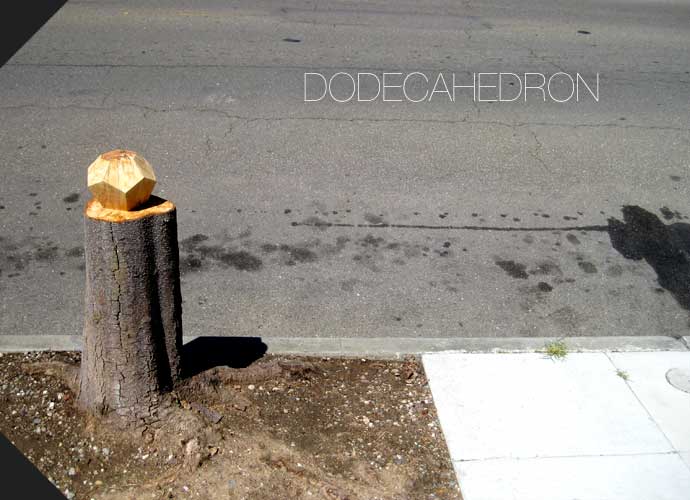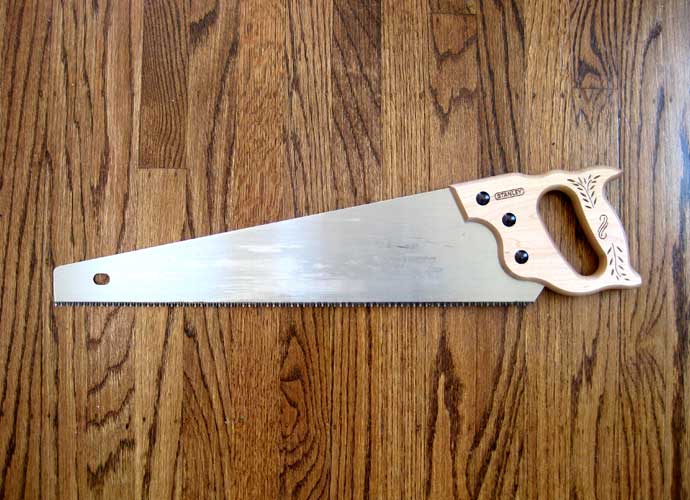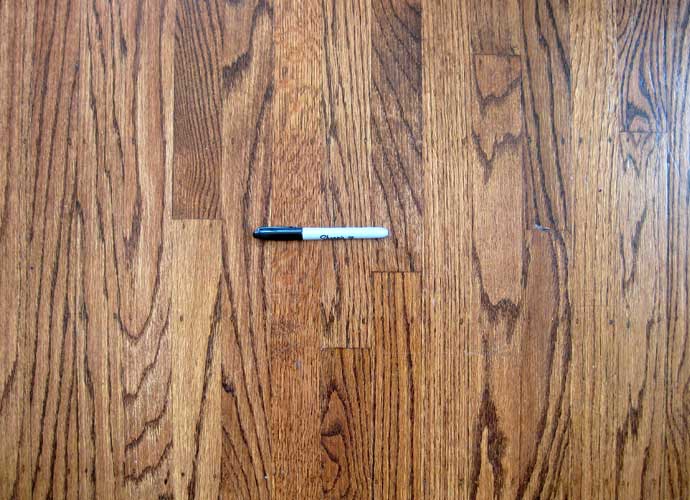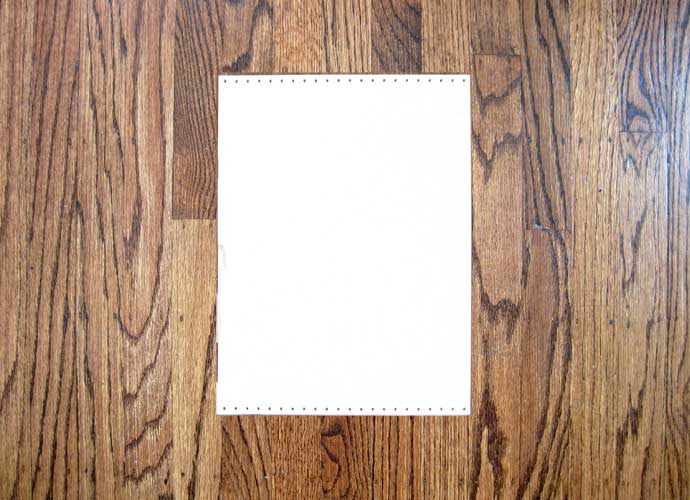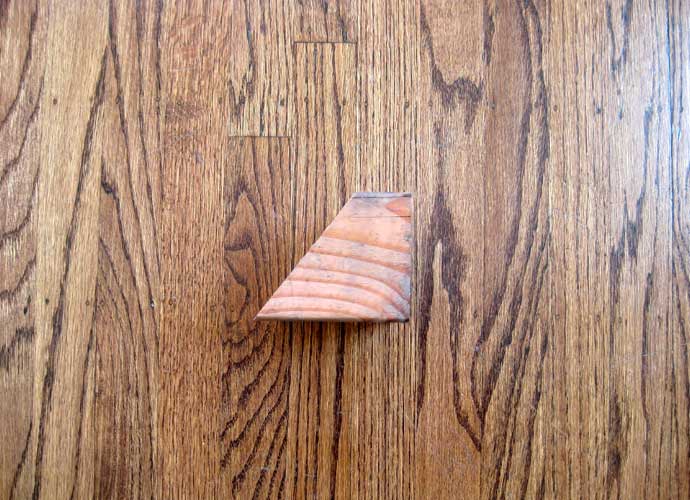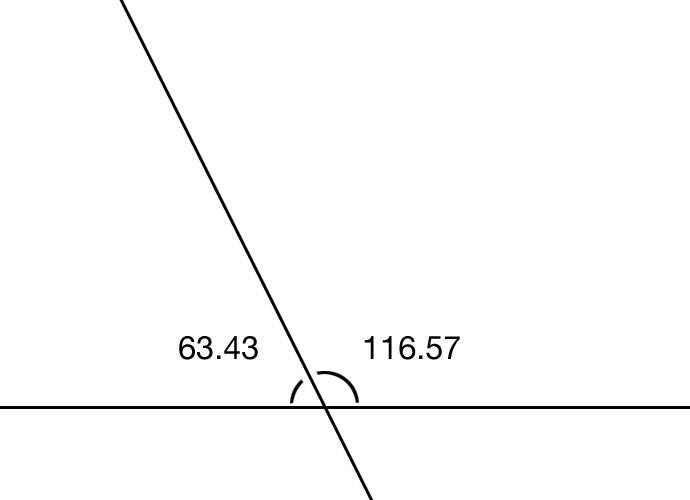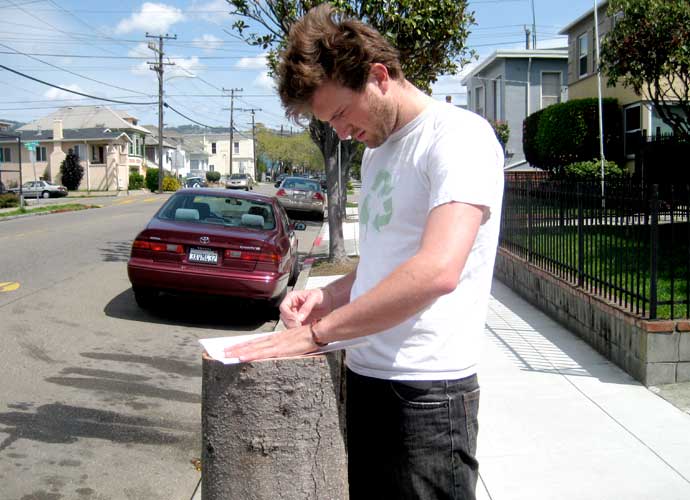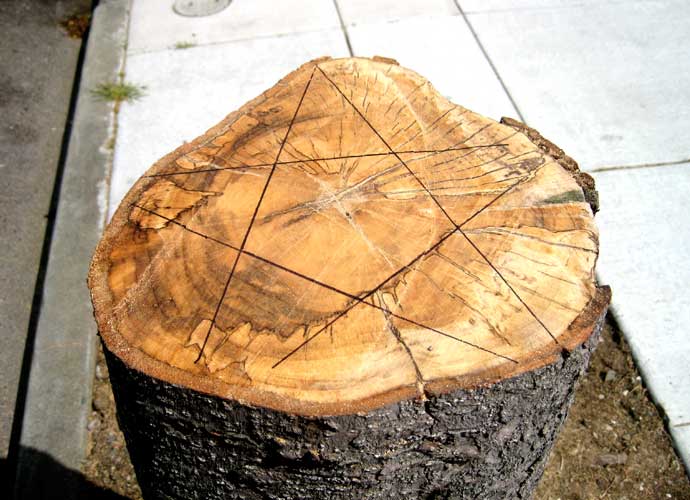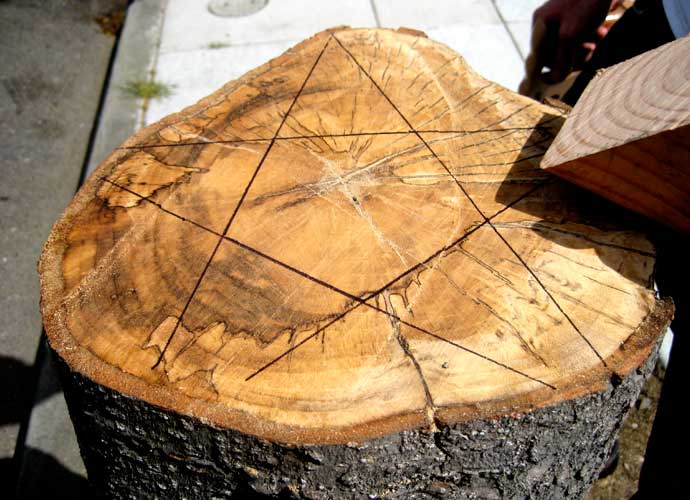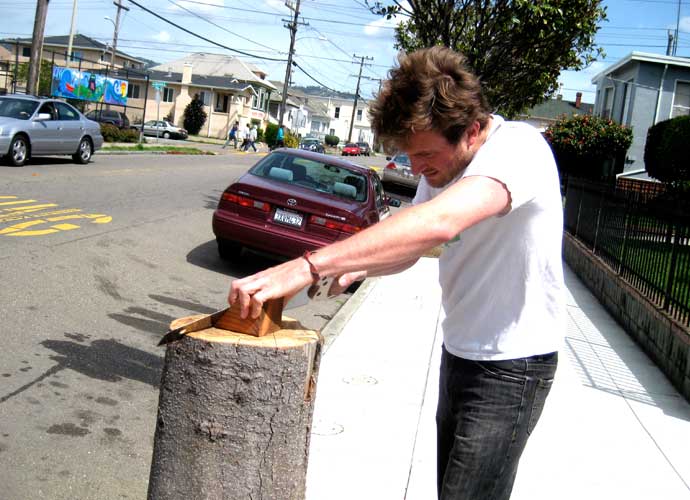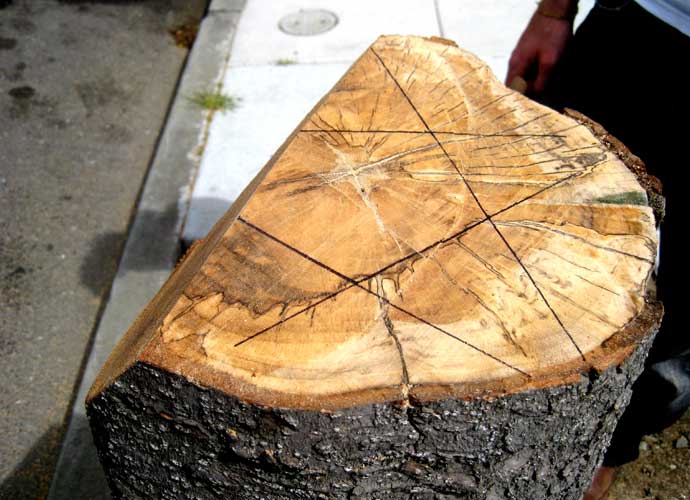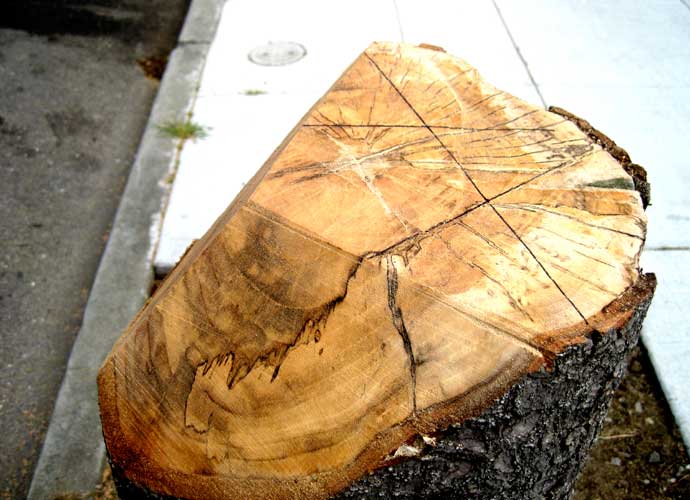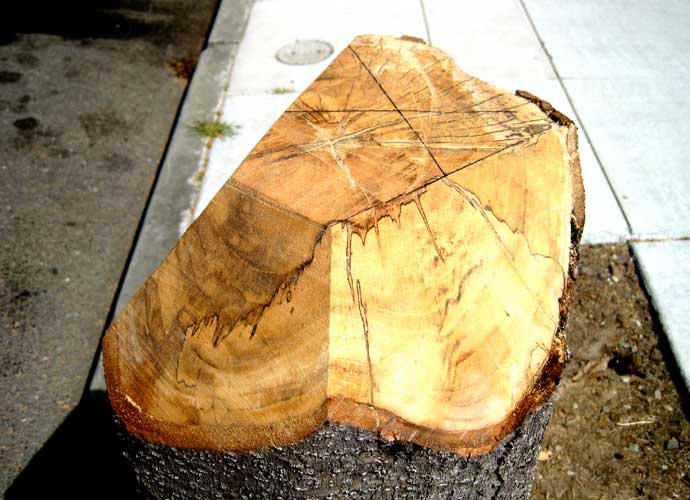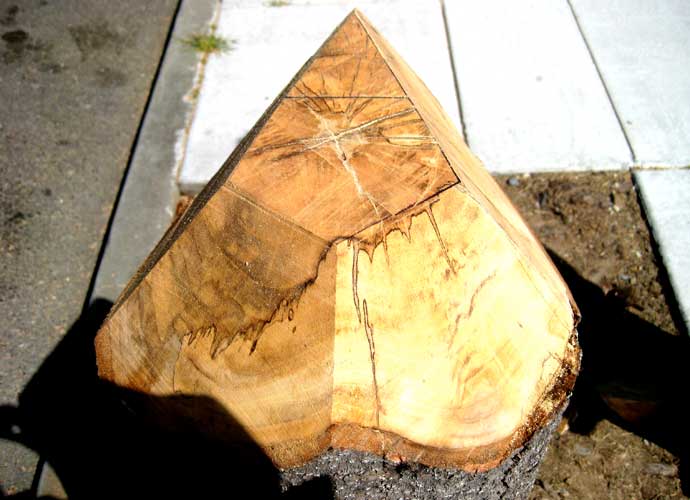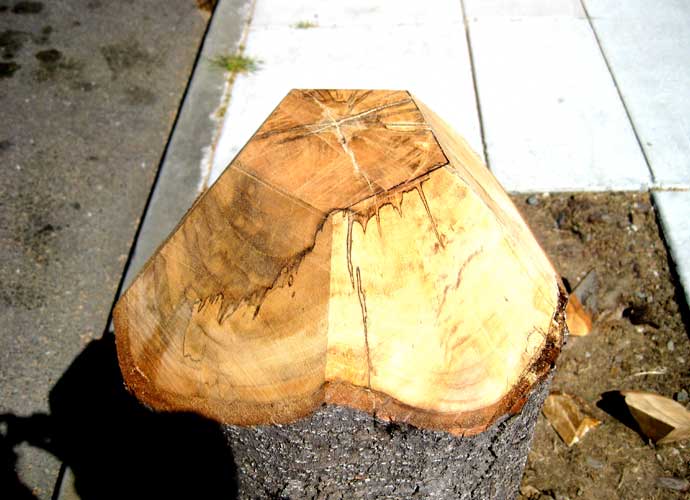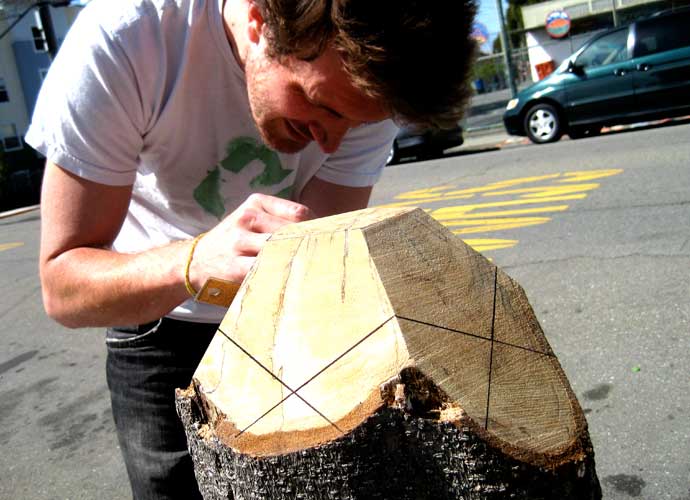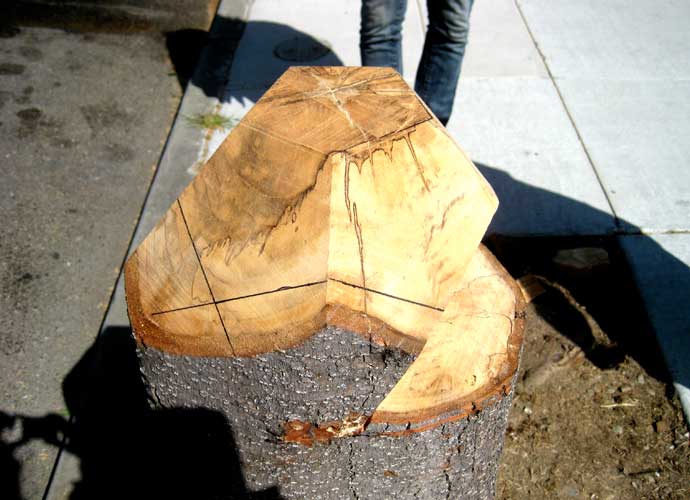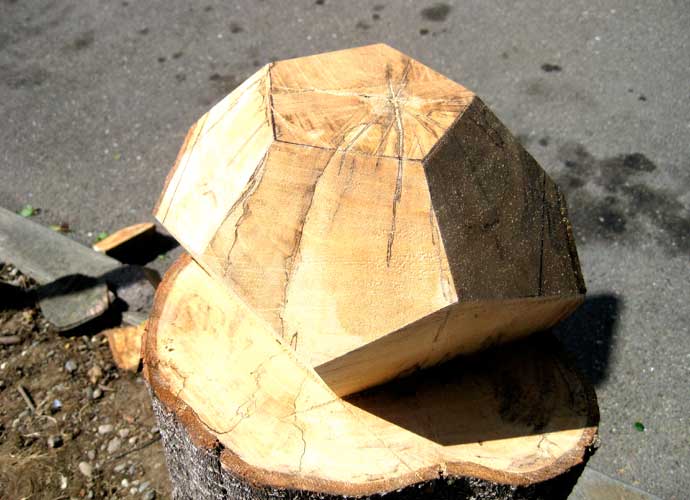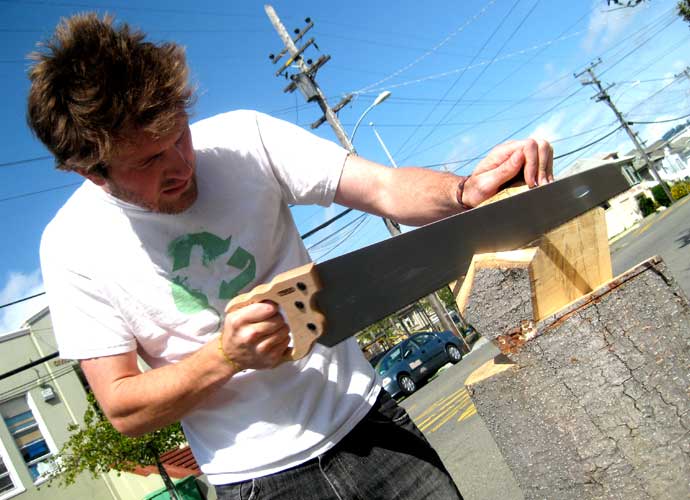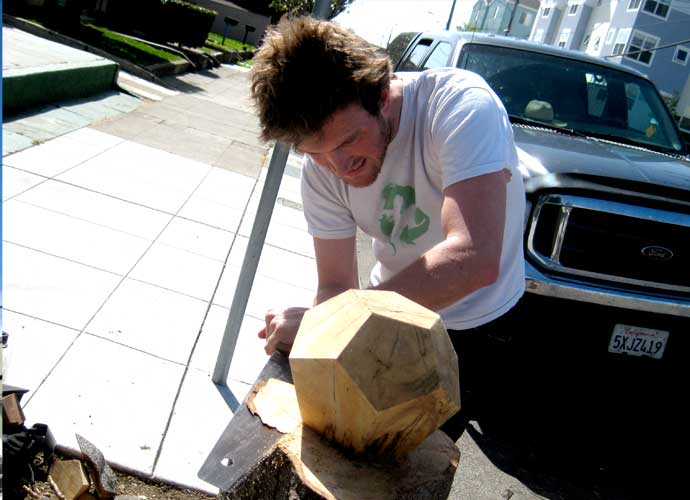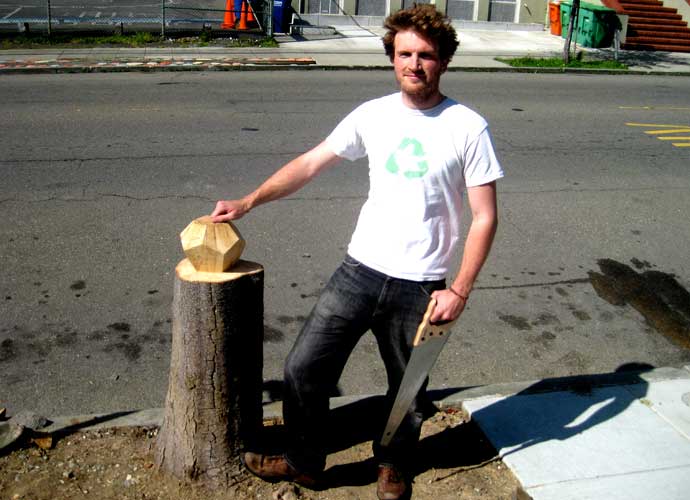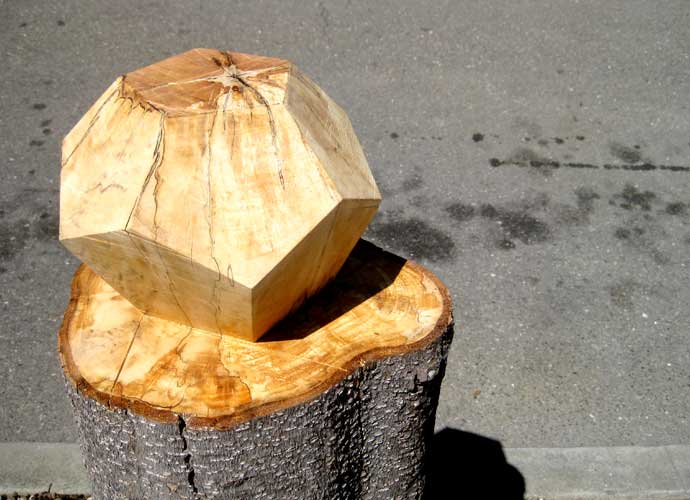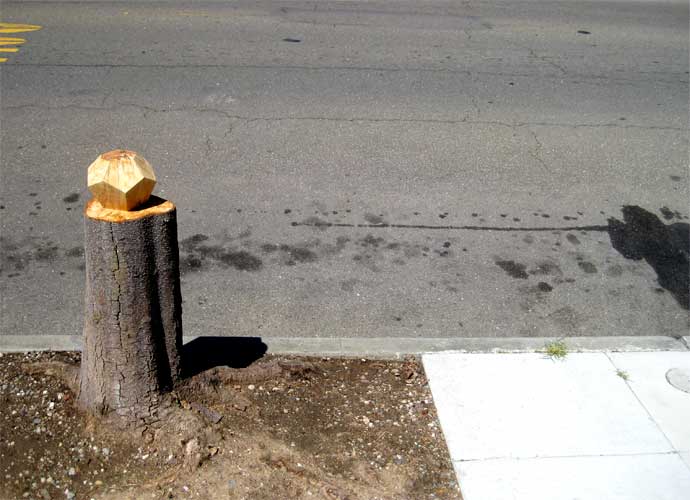- At 1:30pm on April 4th 2010 near the intersection of Alcatraz and Hertzog in Oakland California, Dan Sternof Beyer carved a dodecahedron into a stump with a hand saw. He didn't ask anyone or knock on a single door. He figured that dodecahedra are beautiful and nobody would mind. So far his assumptions are correct.
- Recorded here is the process for repeating this simple act of urban beautification. Photographic documentation credit to the eminent scientist Leonora Bittleston.
|
- Acquire a simple hand saw.
|
|
- Acquire a piece of paper.
|
- Acquire a small black of wood. [ the block shown here is cut with a 63.43 degree angle, which is calculated by the next picture. ]
|
- This is the angle at which you will cut the sides of the dodecahedron. I am looking for an origami solution to achieve this angle, but for now you better just trace it from the screen. If you are not worried about making a perfect dodecahedron you can skip this step and use the 36 degree angle, in the next step, for everything. Imperfection is, after all, the source of uniqueness and spice in life.
|
- Fold the piece of paper in the prescribed way. This will achieve a 36 degree angle with which you will draw a pentagon with.
|
- Measure the stump and determine the size of the dodecahedron in relation to the stump. The width of a dodecahedron is generally twice that of one of its pentagonal sides.
|
- Using the paper angle draw the top side of the dodecahedron on the center of the stump. Continue the lines out to form a star. These lines will help you when you begin to saw.
|
- Take out your saw and piece of wood with the 63.43 degree angle cut into it, which I will refer to here forth as 'the wedge'.
|
- Place the wedge directly flush to a line of the pentagon. Place the saw flush to the wedge and begin to saw very gently and carefully.
|
- You have now made your first 63.43 degree cut.
|
- Continue in the prescribed method with the remaining lines.
|
- Notice how beautiful the grain of the wood is.
|
- Take in these strange geometries you are creating out of what once was a public eye sore.
|
- Passersby may stop to ask you what you are doing. There is no prescribed response. However by declaring that you are an Artist sometimes gives pedestrians enough enigmatic information for them to say a knowing 'Oh' and continue on there way, confused yet satisfied.
|
- Use the paper angle to draw pentagons from the already cut sides.
|
- Next determine the height of the dodecahedron ( twice that of a side ) and mark the stump at that distance from the top. This will give you the distance at which to cut in towards the base. At this step you could use the wedge again as before, however it is possible to simply eyeball it since the lines on connecting sides describe a single plane for which to saw.
|
- Once the first cut is done continue around in the same fashion.
|
|
- Make a few polishing cuts ( if necessary ).
|
- And there you have it. A beautiful piece of public art! Stand proudly by your creation and invite pedestrians over to behold it and ponder the universe with you. Maybe the dodecahedron was always in the stump? Maybe you could carve a stack of dodecahedrons? Maybe it needs a plaque? Maybe space time is more malleable than we think?
|
|
- Now you must leave. What will happen to the dodecahedron? How long will it last? Will your contribution go unnoticed? What have you done? Why have you done it? And why not? _____________________ [ thehinge.net ]
|
